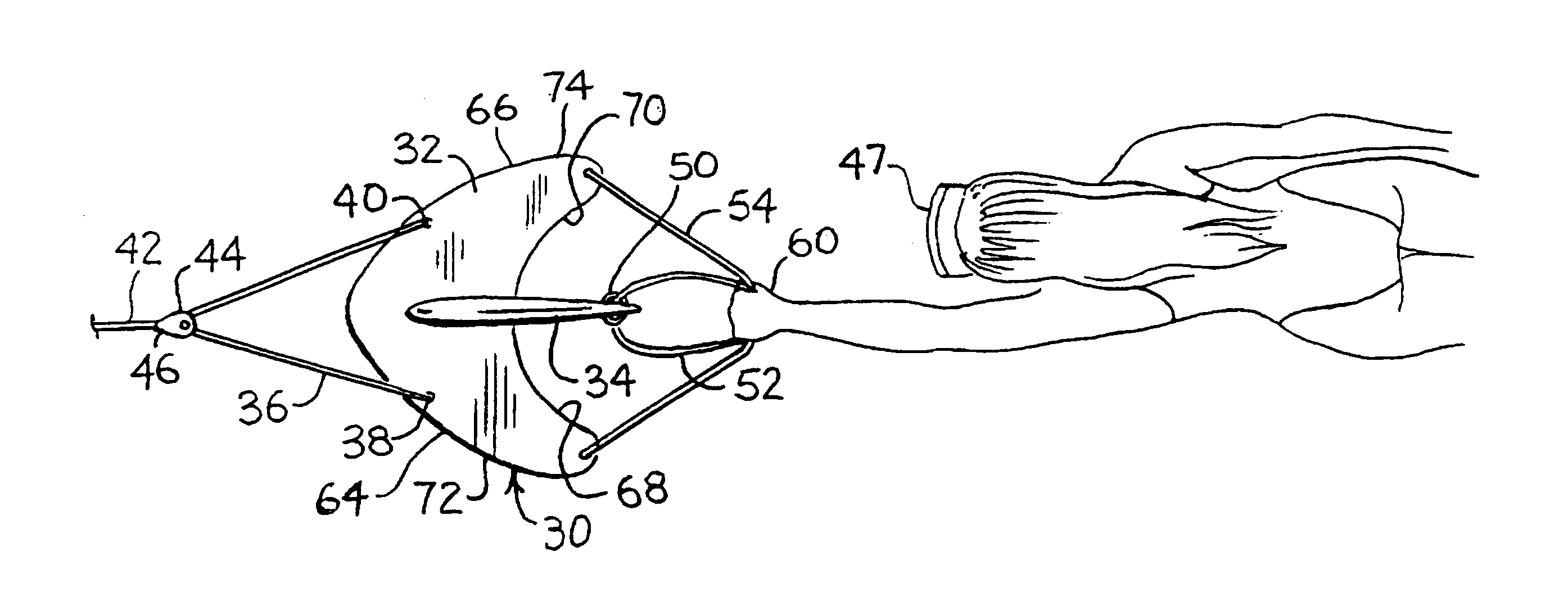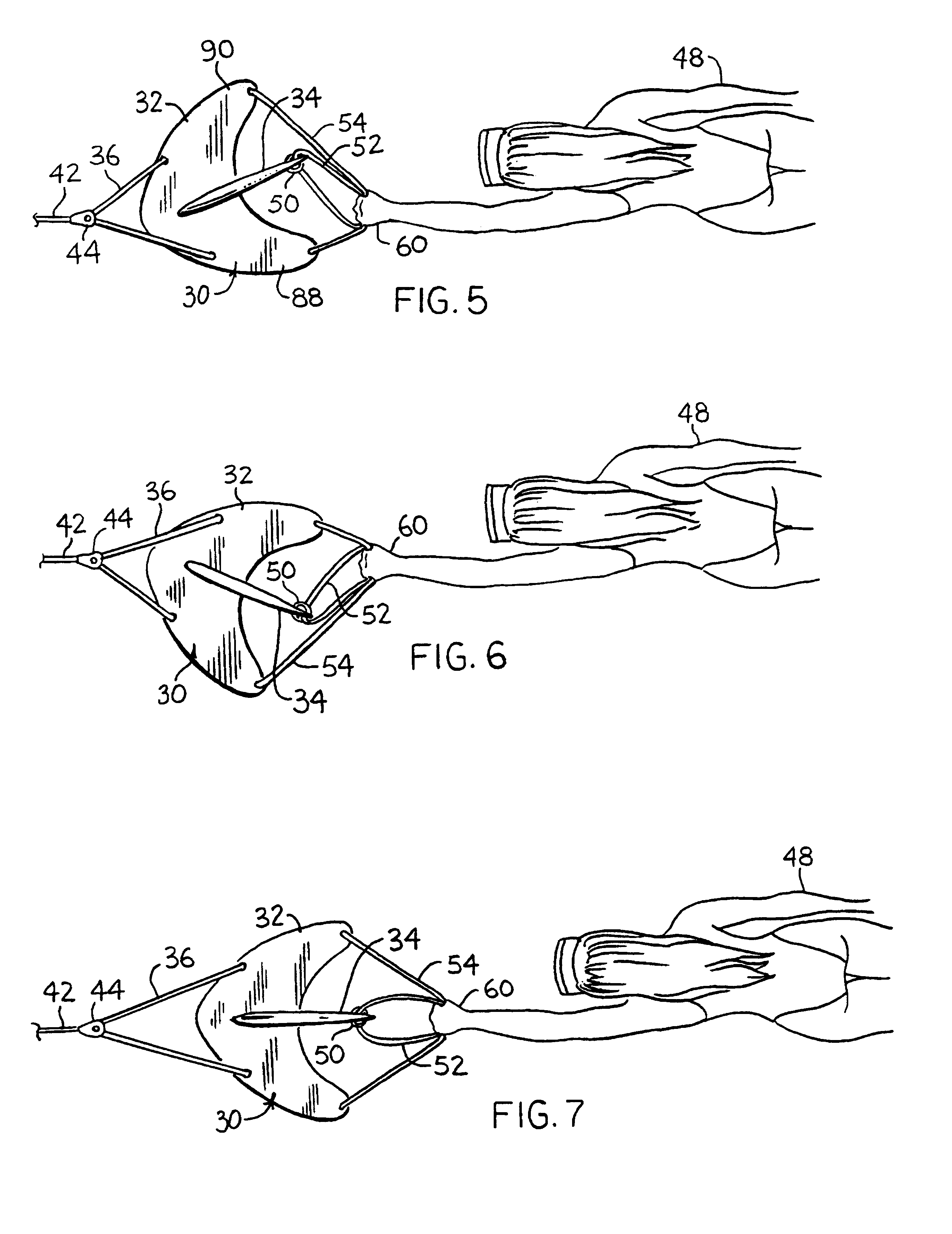Underwater maneuvering device
a maneuvering device and underwater technology, applied in underwater equipment, special-purpose vessels, vessel construction, etc., can solve the problems of user's use of both hands for proper control, the twin hand control requires substantial coordination and skill for proper use, and the relative complexity and cost of manufacture, etc., to achieve convenient storage and transportation, quick disassembly, and substantial arm or body strength
- Summary
- Abstract
- Description
- Claims
- Application Information
AI Technical Summary
Benefits of technology
Problems solved by technology
Method used
Image
Examples
embodiment 30
[0040]Referring to the drawings, more particularly by reference numbers, number 30 in FIG. 1 refers to a towed, underwater maneuvering device. The device 30, as shown, includes a dive plane 32, a fin 34 connected at right angles thereto, and a bridle 36 connected, in embodiment 30, at spaced locations 38 and 40 on the dive plane 32. The bridle 36 is attached to a tow line 42 preferably by some sort of low friction means, such as the single sheave pulley 44 shown. Even though the pulley 44 can include a swivel 46, if the tow line 42 is braided line rather than twisted rope, swivel 46 is not really needed unless the device is used acrobatically, including a series of rolls in the same direction, or the tow line 42 is deployed with an initial twist. Twisted line is not recommended as such tends to unwind with an increasing load which may cause tangles when abruptly unloaded even though a swivel 46 is present.
[0041]The tow line 42 is used to pull the device 30 through the water at relat...
embodiment 202
[0054]FIG. 18 shows the fin member 200 of a molded take apart embodiment 202, as shown the fin member 200 includes a slot 204 extending rearwardly from its leading edges 206 and 208 and the rigid bar 210 is also part of the unitary construction. A vertical tether 212 is connected at the opposite ends of the rigid bar 210. Note that in device 202, the bridle 214 with its pulley 216, is attached to the fin member 200, rather than the dive plane member 220 shown in FIG. 19. Since, in most instances, the primary forces applied to the device 202 by a user are through the rigid bar 210 or the vertical tether 212, this keeps all of the stresses within the fin member 200, which if hollow rotomolded, can be filled with foam 222 and weighted with shot 224 in its rigid bar 210 for strength and rigidity, and to produce the desired tendency to return to the surface under tow. The dive plane member 220 includes a slot 226 which extends from its trailing edges 228 and 230, a pair of channels 232 e...
PUM
 Login to View More
Login to View More Abstract
Description
Claims
Application Information
 Login to View More
Login to View More - R&D
- Intellectual Property
- Life Sciences
- Materials
- Tech Scout
- Unparalleled Data Quality
- Higher Quality Content
- 60% Fewer Hallucinations
Browse by: Latest US Patents, China's latest patents, Technical Efficacy Thesaurus, Application Domain, Technology Topic, Popular Technical Reports.
© 2025 PatSnap. All rights reserved.Legal|Privacy policy|Modern Slavery Act Transparency Statement|Sitemap|About US| Contact US: help@patsnap.com



